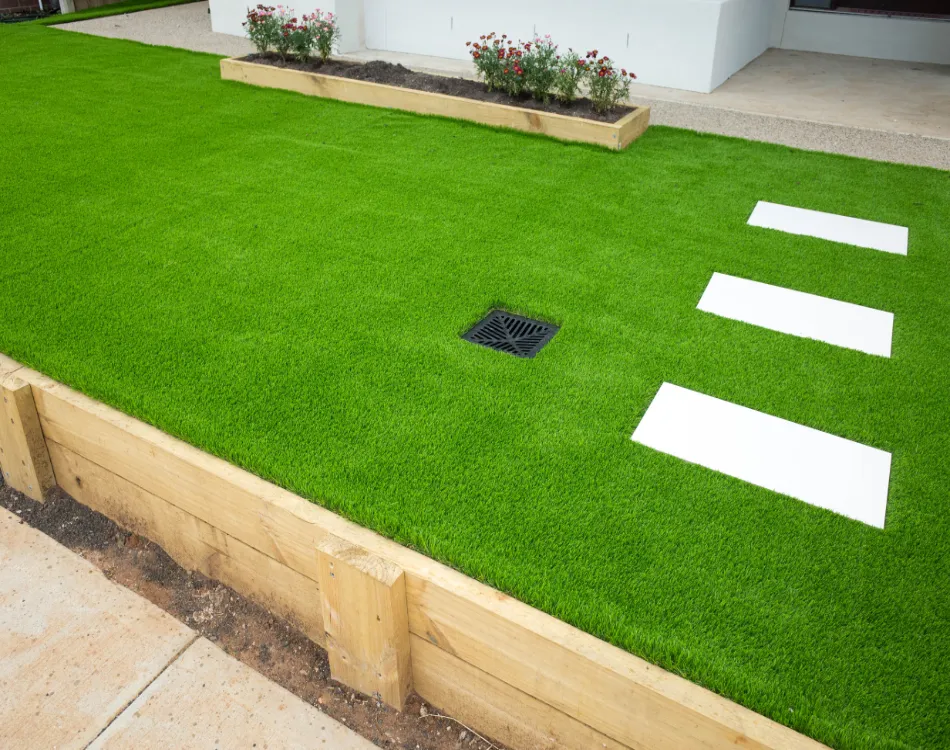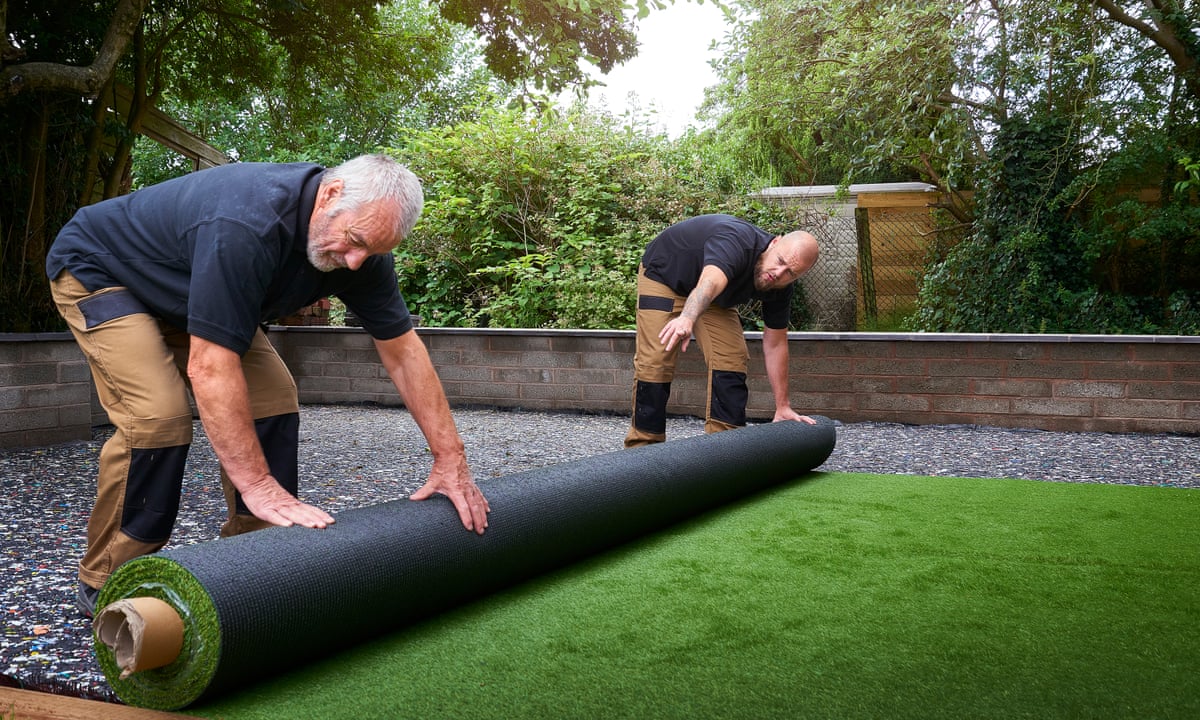Premier Phoenix Turf Companies Providing Premium Synthetic Lawn Products
Premier Phoenix Turf Companies Providing Premium Synthetic Lawn Products
Blog Article
See Why Homeowners Prefer Artificial Lawn for Lasting Landscaping Practices
As property owners significantly prioritize sustainability in landscape design, artificial lawn has emerged as an engaging alternative to typical turf. What continues to be to be explored is the full extent of benefits that man-made lawn can provide to home owners and the setting alike.
Water Conservation Perks
Among the most considerable benefits of synthetic grass is its role in water preservation. Typical grass lawns need significant amounts of water to maintain their rich look, frequently resulting in overuse of neighborhood water sources, specifically in deserts. On the other hand, synthetic grass eliminates this need totally, as it does not need watering. This not only preserves water however additionally reduces the stress on community water systems, specifically during drought problems.
In addition, the setup of synthetic grass can add to a more lasting landscape. House owners can dramatically lower their water bills, enabling for reallocation of resources to various other ecological initiatives or house usages. In addition, synthetic grass is created to withstand various climatic problems without the need for additional watering, making it a suitable selection for areas dealing with water deficiency.
The environmental advantages expand beyond immediate water financial savings. By decreasing water consumption, fabricated grass helps to mitigate the influences of environment change, preserving crucial ecosystems that are endangered by excessive water removal. As sustainable landscaping methods obtain grip, fabricated grass emerges as an accountable option for homeowners seeking to create environment-friendly outdoor rooms.
Lowered Maintenance Initiatives
Synthetic turf significantly decreases maintenance initiatives contrasted to typical yard lawns. With synthetic grass, homeowners can get rid of the taxing tasks associated with natural landscape design, such as mowing, feeding, and weeding. This not just conserves useful time however also reduces physical labor, making lawn treatment accessible for individuals of every ages.
One of one of the most remarkable advantages is the lack of regular mowing. Standard yards need regular trimming to preserve a cosmetically pleasing elevation, whereas synthetic grass continues to be regularly rich without the demand for reducing. Additionally, house owners no more need to apply pesticides or fertilizers, which are commonly needed to maintain all-natural turf healthy and balanced. This change not only lightens the work however likewise promotes a neater, more uniform look year-round.
Additionally, artificial grass is resistant and long lasting, needing very little maintenance past occasional brushing and washing to get rid of particles. This convenience of upkeep enables house owners to enjoy their outside areas without the continuous fear of maintenance, supplying even more time for recreation and family activities. Ultimately, the decreased maintenance initiatives related to synthetic grass make it an attractive option for those looking for a low-maintenance, aesthetically appealing landscape.

Environmental Influence Decrease
There is a growing recognition of the environmental benefits connected with fabricated turf, particularly in terms of water preservation and decreased chemical use. Traditional yards need substantial amounts of water, particularly in drought-prone regions, causing increased stress on regional right here water sources. On the other hand, synthetic grass gets rid of the need for watering, significantly decreasing water usage and advertising sustainability.
Additionally, standard yard upkeep typically involves the application of fertilizers, herbicides, and chemicals, which can contribute to soil and water contamination. Synthetic grass reduces this ecological threat by calling for minimal upkeep and practically removing the need for damaging chemicals. This not only improves dirt health and wellness yet additionally shields local communities from hazardous overflow.
Additionally, the manufacturing of all-natural lawn lawns usually includes using fossil gas for cutting and landscaping devices, further adding to greenhouse gas emissions. By picking artificial turf, homeowners can significantly lower their carbon impact related to yard care activities.
Visual Allure and Convenience
In addition to its ecological benefits, synthetic grass supplies significant visual allure and flexibility for landscape design. Homeowners can accomplish a rich, environment-friendly appearance year-round, getting rid of the seasonal variations commonly connected with all-natural grass. This consistent aesthetic not just improves the visual allure of a home yet additionally adds to a polished and well-kept look.
Additionally, fabricated lawn is available here in a variety of colors, appearances, and designs, permitting customization to suit individual preferences and design themes - Arizona turf. Whether made use of in household yards, industrial areas, or leisure locations, it can effortlessly integrate into diverse landscape design layouts, from contemporary minimalist to lush exotic setups
The convenience of fabricated lawn prolongs beyond mere look; it can be set up in various locations, including roofs, outdoor patios, and even interior areas, creating possibilities for special landscaping solutions. Additionally, it appropriates for a series of activities, from youngsters's backyard to pet-friendly environments, giving performance without compromising design.
Eventually, the visual charm and versatility of fabricated grass make it an attractive choice for property owners looking for sustainable landscape design services that do not give up charm for ecological obligation.

Long-Term Price Cost Savings
Among one of the most compelling benefits of synthetic grass is its capacity for long-term price savings. Unlike all-natural grass, which calls for routine upkeep-- including mowing, watering, feeding, and insect control-- fabricated grass substantially lowers these continuous expenditures. Property owners can conserve a substantial quantity on water bills, particularly in areas where water scarcity is a pushing issue. The removal of grass care solutions better contributes to monetary cost savings, as there is no need for specific tools or labor.
Furthermore, fabricated turf has a life expectancy of 15 to 25 years, depending upon its top quality and use. This resilience reduces replacement expenses, making it a much more have a peek at these guys affordable selection over time. The initial financial investment in man-made turf can frequently be recovered through the financial savings built up over time.
While the upfront price may appear greater compared to sod installation, the cumulative financial savings from lowered maintenance and water use often surpass these first expenses. Eventually, the adoption of artificial lawn not just promotes a lasting landscaping remedy however additionally supplies house owners a monetarily smart alternative that aligns with long-term budgeting objectives.
Verdict
Man-made turf emerges as a compelling choice for lasting landscaping, offering substantial advantages in water preservation, minimized maintenance efforts, and diminished ecological impact. Its visual appeal and versatility improve the aesthetic landscape while lining up with modern sustainability goals. Additionally, lasting expense financial savings add to its good looks for property owners. As communities significantly prioritize eco-friendly methods, the fostering of synthetic grass stands for a progressive step towards attaining durable and lasting landscapes.
In addition, artificial turf is designed to endure different climatic conditions without the requirement for extra watering, making it an excellent selection for areas encountering water shortage. (Phoenix turf companies)

Artificial lawn arises as a compelling option for lasting landscaping, providing significant benefits in water conservation, reduced upkeep efforts, and lessened ecological impact.
Report this page